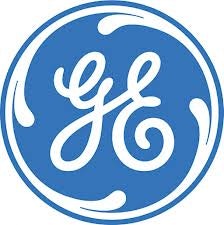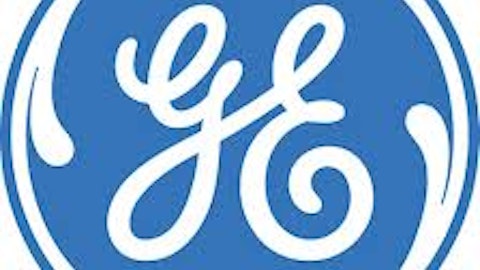
Reasons to be skeptical about an investment in wind
There are many good reasons to believe that an investment in a wind power is not a surefire path to riches. The Danes generate 30% of their electricity via wind power, the highest percentage in the world. As a result, the Danish people pay more for power than any country in Europe. In Denmark, residential electricity costs nearly triple what it does here in the United States.
Additionally wind is not as consistently reliable as other forms of electricity generation. The variable speeds and availability of wind makes it practically impossible for turbines to generate output equal to maximum capacity. Over the course of a year, a wind turbine only typically produces electricity equal to 30% of its total capacity.
The bears do have some valid points. Wind energy technology is not developed enough to make mass adoption economical, even if it is possible. But wind energy has some serious potential that could be unlocked in the coming decades. Investing now, while the sector is still in its infancy, could pay off in the long run.
The domestic option
The largest producer of wind turbines in the United States is GE Energy, a division of General Electric Company (NYSE:GE). The company has a 7.7% market share, the sixth largest in the world, in wind turbine installations. Right now wind energy is an insignificant piece of General Electric Company (NYSE:GE)’s pie. But if it continues to cement a position as a leader in wind energy, that may not always be the case.
The company has been investing aggressively in India, a country that currently generates 70% of its electricity using coal. Through an agreement with Greenko, General Electric Company (NYSE:GE)’s turbines are a part of a project to generate 500 MW of electricity in India. That’s enough to power 875,000 Indian households, and displace 700,000 tonnes of greenhouse gas emissions per year.
More of a pure play
The fourth largest wind turbine producer is Gamesa a Spanish company. The bulk of this company’s revenue and profit are earned through generating wind energy. A company with more exposure to the sector has more to gain from widespread adoption of wind energy, but also more to lose if wind does not become widely popular.
Gamesa is a $1.9 billion dollar company with net working capital of $652 million. First half 2013 sales of $1.47 billion were accompanied by a slight net profit of $29 million. Sales declined 26.4% from the comparable period in 2012, a period in which a net loss was recorded. While the drop in sales is somewhat disconcerting, the fact that the company turned a profit off of much lower sales volume is an encouraging sign.
The company has an active presence in Mexico, a country in which it has installed turbines totaling 765 megawatts of capacity. Gamesa recently won an order to install another 138 megawatts of capacity in Mexico. To accomplish this the company will deliver ten 2 megawatt turbines in 2013, and 59 more of such turbines in 2014.
The largest wind energy company
Knowing how the Danes love their wind energy, it’s no surprise that the biggest wind energy company is a Danish one. The largest pure play on wind energy is Vestas Wind Systems, a company the market is selling for $4.3 billion dollars.
Vestas has $260.4 million in net working capital along with $1.97 billion in shareholder’s equity. Between 2008 and 2011 the company’s capital expenditures totaled approximately $4 billion dollars.
The company has gone back and forth between being in the red and in the black. For the most part it has been in the red. In the past five years 2011 was the only year in which Vestas was cash flow positive. Although to be fair, Gamesa has also not proven its ability to produce profits for an extended period of time either.
Vestas is the leading supplier of wind power in South Africa. The company has received three orders this year for its turbines to be built in the sub-Saharan nation. The most recent came on August 1, when the company won an order to supply 105 megawatts of turbines to a wind farm operated by Innowind, a subsidiary of Electricite de France.
Foolish final thoughts
At the present time, pure play wind power producers are struggling to turn a profit. Both Gamesa and Vestas have, however, produced profits in the past, albeit inconsistently. Investors with a need to turn a quick profit that don’t like surprises had best look elsewhere.
But for those investors with a long term horizon, who are willing to stomach some risk, wind power presents an opportunity that deserves consideration. The potential of the industry is undeniable. Countries are realizing that they need to produce power in a way that preserves the planet for our ancestors.
According to Gamesa’s 2012 report, worldwide installed turbine capacity was 282,430 megawatts. Cumulative capacity increased by nearly 20% in 2012 alone. Wind power does not appear to be just a passing fad.
For investors with low risk tolerance looking to diversify into wind energy, General Electric Company (NYSE:GE) is your best bet. It’s a solidly profitable enterprise that pays a 3.1% dividend. Those looking for a high risk, high reward scenario ought to take a look at Gamesa and Vestas. Those two companies are not consistent profit producers, but that all could change if the world continues installing wind turbines at the current rate.
The article Does the Power of Wind Belong in Your Portfolio? originally appeared on Fool.com is written by Ryan Palmer.
Fool blogger Ryan Palmer has no position in any of the stocks mentioned in this article. The Motley Fool owns shares of General Electric. Ryan is a member of The Motley Fool Blog Network — entries represent the personal opinion of the blogger and are not formally edited.
Copyright © 1995 – 2013 The Motley Fool, LLC. All rights reserved. The Motley Fool has a disclosure policy.



